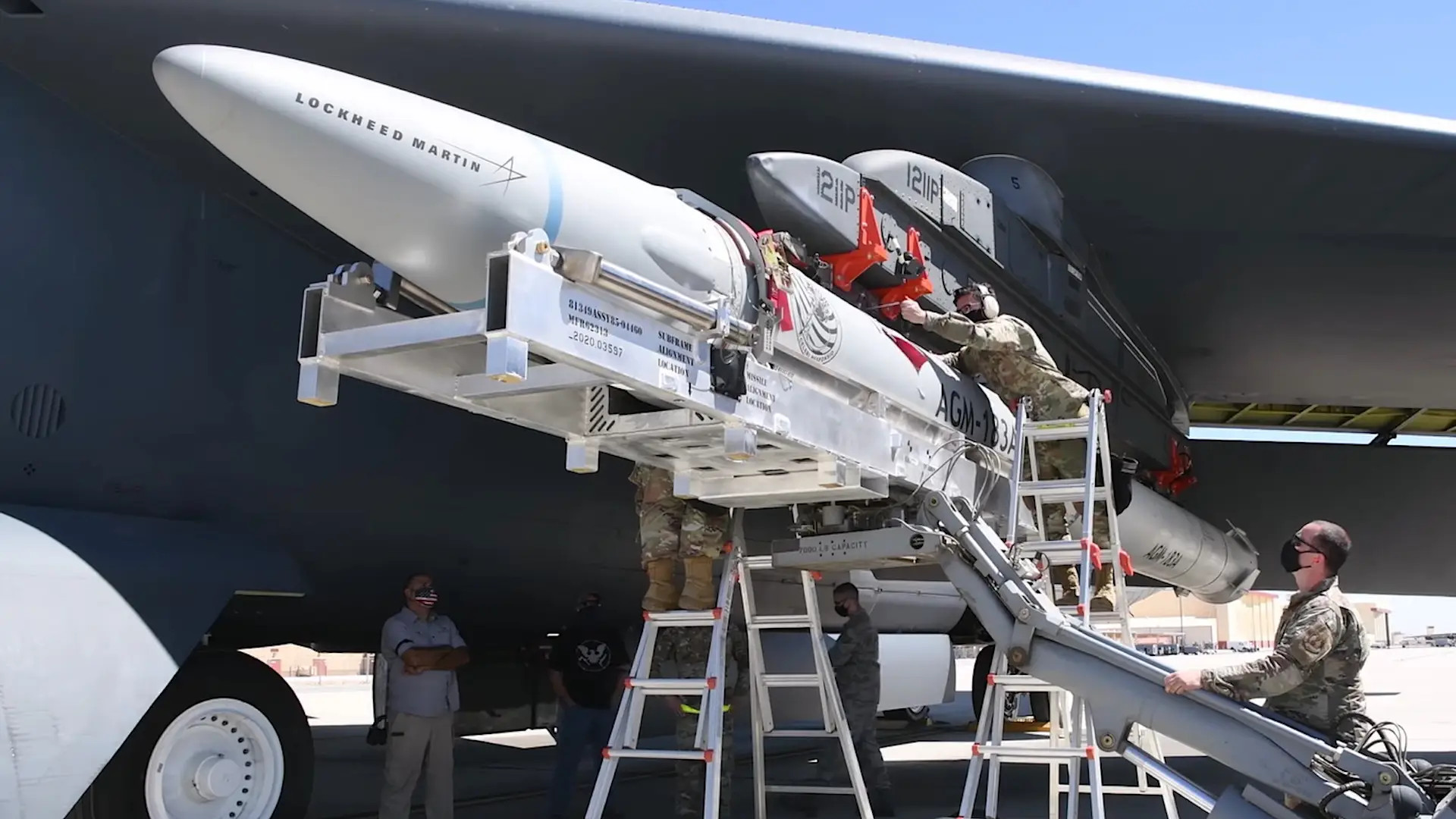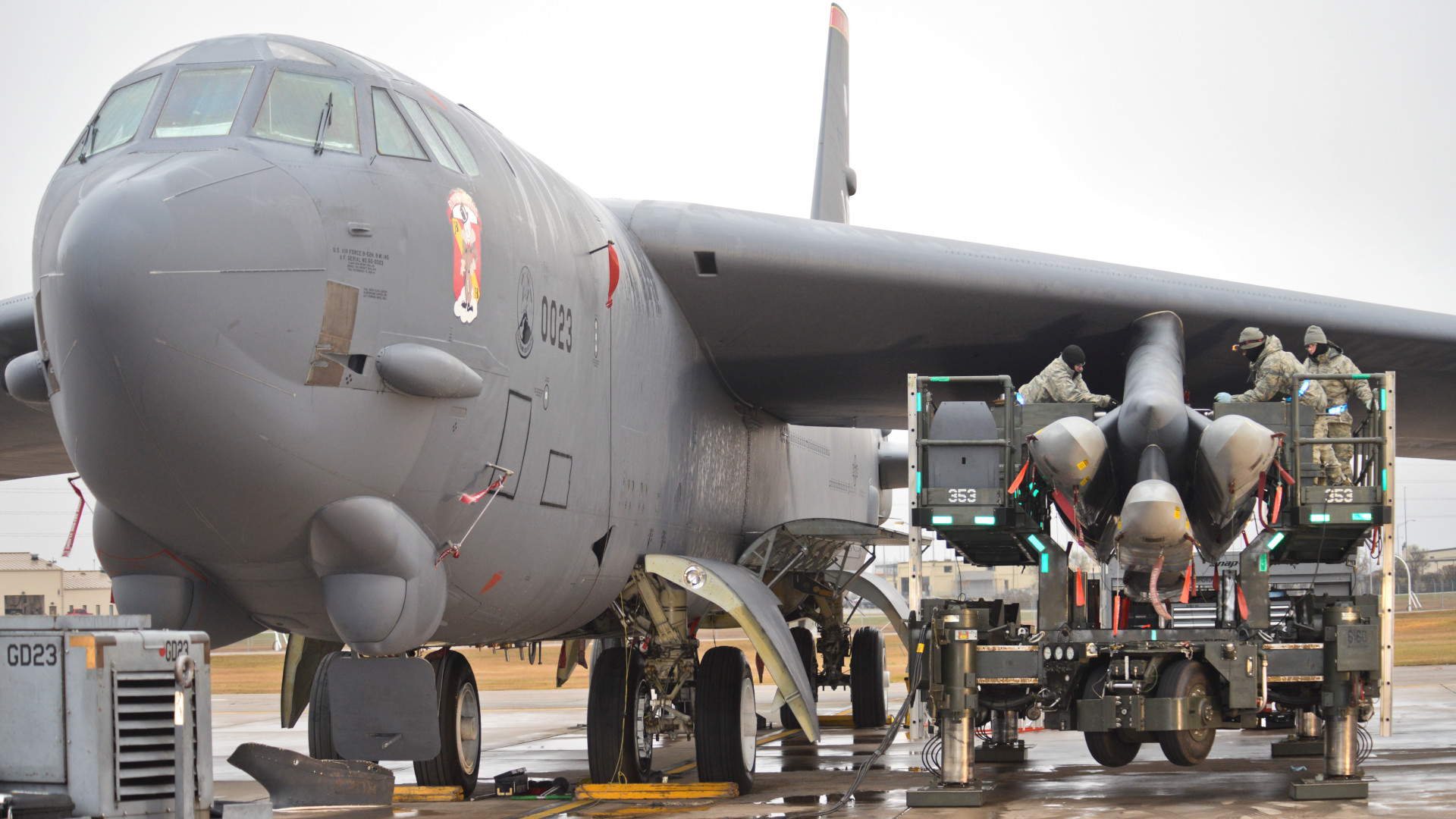The U.S. Air Force is seeking modified underwing pylons for its B-52H bombers to help ensure they will be able to carry as many hypersonic cruise missiles as possible in the future. The service says this is a particularly important requirement in the context of being prepared for a potential future high-end conflict in the Pacific against China.
A contracting notice discussing the Air Force’s B-52 pylon plans in relation to the development of a new conventionally-armed air-breathing hypersonic cruise missile was released back at the end of November. Last year, the service hired a Raytheon/Northrop Grumman-led team to develop a weapon of this type under the Hypersonic Attack Cruise Missile (HACM) program. Air Force Global Strike Command’s (AFGSC) B-52 bombers are set to be one of the primary launch platforms for these missiles when they begin entering service, which is currently expected to occur in 2027.

“AFGSC is developing a new conventional High Speed, Air-breathing cruise missile capable of range >1000 miles. Such a missile carried by the B-52 will likely exceded [sic; exceed] the capacity of the existing conventional weapons pylon and Heavy Stores Adapter Beam (HSAB),” the November contracting notice explains. “AFGSC is exploring other means of missile carriage on the B-52. One option is repurposing the existing SUU-67/A Aircraft Pylon for conventional use.”
Per the November contracting notice, the Air Force wants to hire a company to conduct a feasibility study and develop a modification plan for the SUU-67/A to meet these new requirements. If that phase is successful, then a physical prototype could be built and flight tested.
The B-52H can currently carry six nuclear-armed AGM-86Bs under each wing using HSABs fitted with SUU-67/A pylons, along with eight on a rotary launcher in the aircraft’s bomb bay. The bombers have been able to carry an equal number of conventionally-armed AGM-86C/D Conventional Air-Launched Cruise Missiles (CALCM), but the last of those weapons were retired in 2019.

B-52s can also carry AGM-158 Joint Air-to-Surface Standoff Missiles (JASSM) series cruise missiles under its wings, but using different pylons in conjunction with the HSAB. Members of the JASSM family are also significantly smaller and lighter than AGM-86-series missiles.

Details about the HACM design are limited, but the Air Force’s expectation is clearly that it will be heavier, if not larger overall, than the AGM-86B. HACM is understood to be a two-stage weapon that uses a rocket booster to accelerate the main body to a high enough speed for its advanced scramjet engine to take over. Scramjets do not function properly even at lower supersonic speeds. You can read more about what is known about HACM so far here.

So “without a capable external pylon, B-52 carriage is diminished 60%,” the contracting notice warns.
It is, of course, worth noting that even with a suitable pylon, HACM may be too big for a B-52 to carry six of them under each wing. The missile’s size will impact how many can be loaded into the B-52’s bomb bay, too.

These issues are not new to the Air Force, either. Back in 2018, the service announced its interest in acquiring new underwing pylons for the B-52H specifically to accommodate munitions weighing up to 20,000 pounds. The Improved Common Pylons (ICP) that Air Force B-52s have used for decades to carry various conventional weapons under their wings are only rated for munitions in the 5,000-pound weight class or below.

Boeing subsequently developed a pylon to meet those demands, dubbed Hercules, which were linked to the Air Force’s planned acquisition and fielding of the AGM-183A Air-Launched Rapid Response Weapon (ARRW). ARRW is a different kind of hypersonic missile from HACM, which carries an unpowered boost-glide vehicle, something you can read more about here.

The Air Force said earlier this that it did not intend to pursue further development of the AGM-183A, which has had a very checkered testing record to date, in favor of HACM. The service has since said that it has not completely ruled out the possibility of acquiring hypersonic missiles that use unpowered boost-glide vehicles in the future.
Regardless, overall, the AGM-183A’s design is more akin to an air-launched ballistic missile and is understood to be larger than HACM. So, it is possible that the Hercules pylon could be another option for loading HACMs onto B-52s. Being able to convert SUU-67/As to do the same would allow the Air Force to leverage its existing stockpile of those pylons rather than having to buy all new mounting hardware.
The modified pylons could potentially be suitable for use with other future weapons, hypersonic or otherwise, and on other aircraft, too. It is interesting to note here that Boeing has already developed another new modular pylon with a particular eye on integrating future hypersonic weapons onto the B-1 bomber.

Whatever pylon the Air Force ultimately uses to load HACMs onto its B-52Hs, the service clearly wants to make sure that those bombers will be able to carry as many of these weapons as they can. “Potential andversaries [sic; adversaries] and conflicts in the Pacific region will need dozens of cruise missiles in mass attacks against hostile forces,” the November contracting notice explains.
The Air Force has made no secret in the past about how critical it views hypersonic weapons, broadly, as part of its future warfighting plans, especially in a potential conflict against a near-peer adversary such as China or Russia. Both of those countries have begun to field their own hypersonic missiles and continue to develop additional types.
In addition, the B-52, with its ample underwing space for outsized payloads, has also long been seen as an ideal platform for employing various types of hypersonic weapons. The Air Force expects to keep flying B-52s through at least 2050 with the help of new engines and radars, along with a host of other upgrades that you can read more about here.

The U.S. military has faced challenges in its development of hypersonic weapons beyond ARRW, too. “I do think there are concerns, as there are with any hypersonic technology, that we have to wring through how these work operationally and make sure that our test capabilities are sufficient to really help us know that we have a meaningful military capability,” Assistant Secretary of the Air Force for Acquisition, Technology, and Logistics Andrew Hunter told DefenseScoop about HACM in an interview earlier this month.
There is also a cost question for hypersonic weapons like HACM, especially if the plan is to employ them in large volumes in future major conflicts as evidenced by the Air Force’s B-52 pylon contracting notice.
“I would think an average procurement unit cost of in the single digit millions is where we should aim for it,” Undersecretary of Defense for Acquisition and Sustainment William LaPlante, speaking about U.S. hypersonic weapon developments broadly, told DefenseScoop earlier this year. “And we’re actually looking at some that are as low as $3 million an all-up round. That’s where we want to be.”
For reference, $3 million is still more expensive than the unit cost of any conventionally armed air or surface-launched cruise missile currently in U.S. military service. Still, bringing in a hypersonic standoff capability at anywhere near that price would be a major accomplishment.

Altogether, much about the Air Force’s hypersonic weapon plans could still change in the coming years. The B-52 pylon plans do underscore that the service is currently still very committed to the HACM concept and wants to make sure its B-52s will be able to make the most of those missiles when they arrive.
Contact the author: joe@thedrive.com
